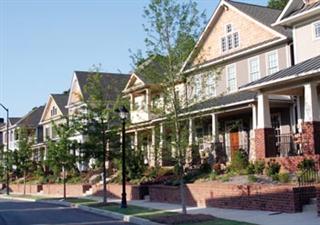
FORT LAUDERDALE, FL - South Floridians agree on the need for workforce housing - reasonably priced homes for police, firefighters, nurses, medical technicians, teachers, office workers and other young working professionals. So, why aren't we building more of it? That's the challenge a local Urban Land Institute (ULI) group is addressing as part of a prototype design initiative, one of three nationwide pilot projects sponsored by ULI's Terwilliger Center for Workforce Housing.
The group plans to present its findings and recommendations to the three traditional partners in the workforce housing mix, government, large employers and the development community, starting on June 20 at a ULI meeting at the Sheraton Fort Lauderdale Airport Hotel. "Our initial objective is to see 3,500 units come out of the ground in the next three to five years," local steering committee Chairman Michael Wohl said. "We'll be the go-to resource for workforce housing solutions, and develop a useful pattern others can quickly replicate."
If solutions aren't found, expect the out-migration from Florida to gain momentum, said real estate analyst Jack McCabe, CEO of Deerfield Beach-based McCabe Research & Consulting, who is not a committee member. "Two-income families making $50,000 to $60,000 gross income a year are struggling today and paying out as much or more than 50 percent of their net income for housing."
The 19 local professionals in the pilot group agree it's not an easy fix. "We're looking at all facets of the challenge: land costs, zoning constraints, regulatory delay, financing, incentives, design issues and even getting buyers qualified," said Wohl, a partner in Miami-based Pinnacle Housing Group.
Workforce housing is the middle strata of housing, falling between market rate and affordable housing, saidFort Lauderdale-based land use services consultant David M. Orshefsky, president of Orshefsky Holdings. It is designed to appeal to workers who are making 60 percent to 140 percent of the area median income (AMI) and may include some developer and buyer incentives. Each county computes its own median income.
Housing designed for buyers earning 60 percent or less of AMI is generally referred to as affordable housing, and includes substantial developer and buyer/renter incentives, government tax credits and subsidies. Workforce starts where affordable housing leaves off, although there sometimes is a slight overlap between the two categories. "The philosophy of workforce housing is that it should be located near where people actually work," said Paul Kissinger, a principal with Fort Lauderdale-based architectural landscape and digital design firm EDSA. The idea is to reduce the time and cost of commuting while improving the quality of urban life.
EDSA is working closely with Miami-based Zyscovich Architects on a series of workforce housing modules ranging from one-block -size pods of single family homes, at 6.6 an acre, to townhomes, at 7.3 an acre, to low-rise multifamily configurations of 19 units an acre. For South Florida, that generally means infill development, utilizing land parcels that have been skipped over in previous development thrusts, or tearing down obsolete structures to reutilize the land.
Real estate analyst Lewis Goodkin, of Miami-based Goodkin Consulting, calls the availability of workforce housing a key factor in attracting new business firms into the area. "I feel that the timing is right to achieve some significant results. The development community finally got the message that the real demand for housing must be focused on affordability." Substantial residential recovery, he added, will be very dependent on addressing affordability when the market bottoms out.
As with affordable housing, workforce housing has its share of NIMBYism (not
Source: Urban Land Institute